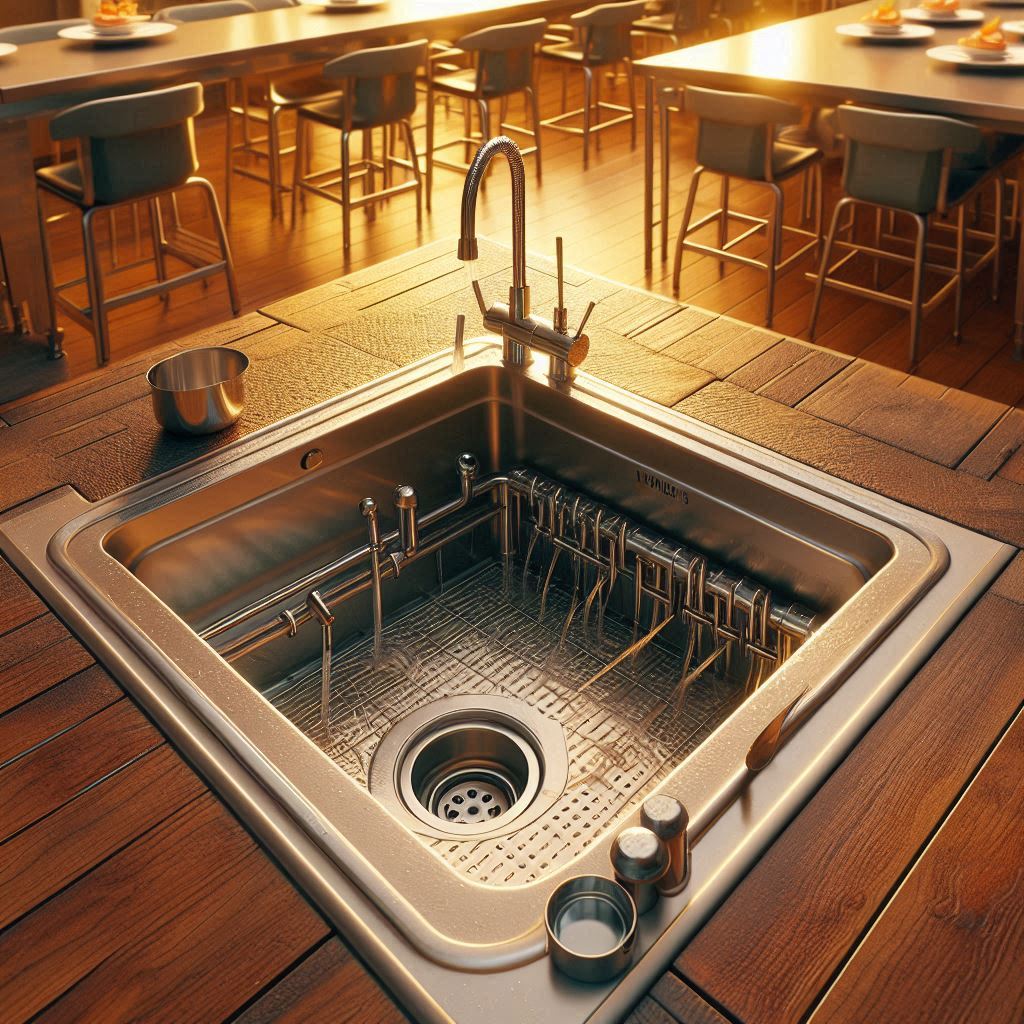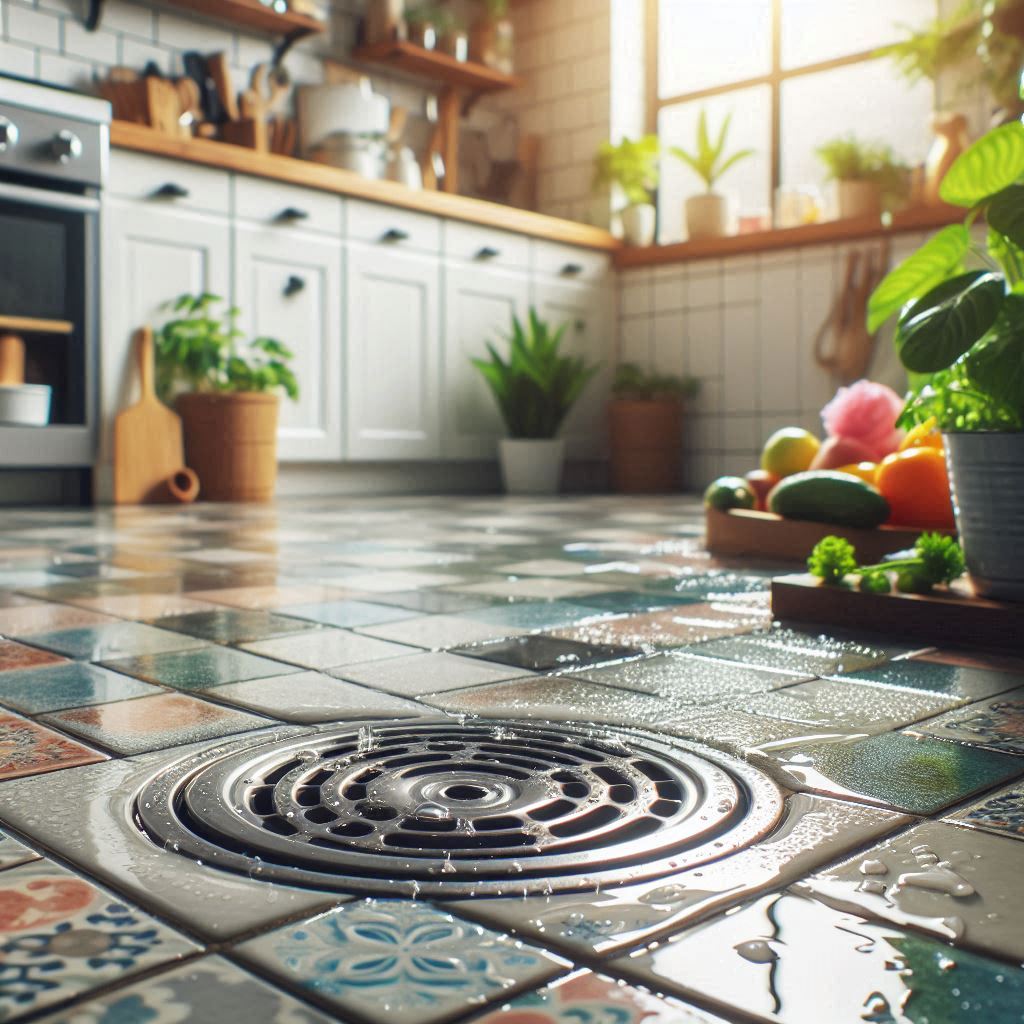In commercial and industrial settings, maintaining proper hygiene and cleanliness is essential. This requires having a reliable and efficient drainage system to remove waste water and prevent any potential health hazards. Two common types of floor drainage systems are floor sinks and floor drains.
While they may seem interchangeable, they serve different purposes and have unique features that make them suitable for specific applications. This article will explore what a floor sink and floor drain are, how they differ from each other, and whether you need both in your facility.
What is a Floor Sink?
A floor sink is a type of drainage system that is installed in the floor of commercial kitchens, laboratories, and other facilities where liquid waste is produced. It is typically made of stainless steel, cast iron, or plastic and is designed to capture solid waste and debris, preventing it from entering the sewer line. Floor sinks are usually installed in areas where heavy-duty cleaning is required, such as in food preparation areas or laboratories.

What is a Floor Drain?
A floor drain is a plumbing fixture that is installed in the floor to remove wastewater from the building. It is typically made of brass or stainless steel and is designed to allow water to flow freely into the drainage system. Floor drains are installed in areas where water spills are likely to occur, such as in showers, locker rooms, and pool areas.

How a Floor Sink Differs from Floor Drain
Let’s now look at how a floor sink differs from a floor drain in several aspects:
1. Purpose
The primary difference between a floor drain and a floor sink is their intended purpose. Floor sinks are designed to capture solid waste and debris, while floor drains are designed to remove wastewater.
Floor sinks are installed in areas where there is heavy-duty cleaning and the potential for solids and debris to enter the drainage system. Floor drains, on the other hand, are installed in areas where water spills are likely to occur and where wastewater needs to be removed.
2. Installation
The installation of a floor sink and a floor drain also differs. Floor sinks are typically installed in the middle of a room or in a designated area where heavy-duty cleaning is required. They are usually surrounded by a raised edge that prevents water from overflowing and can be connected to a floor drain or the sewer line.
Floor drains, on the other hand, are installed in areas where water spills are likely to occur, such as near showers or sinks. They are usually installed in a sloped floor to allow water to flow freely into the drain.
3. Design
Floor sinks and floor drains also differ in design. Floor sinks are usually larger than floor drains and have a raised edge that prevents water from overflowing. They are designed with a strainer basket that captures solid waste and debris, preventing it from entering the drainage system.
Floor drains are typically smaller in size and are designed to allow water to flow freely into the drain. They usually have a grating or cover that prevents larger objects from entering the drain.
4. Usage
The usage of a floor sink and a floor drain also differs. Floor sinks are used in areas where heavy-duty cleaning is required, such as in food preparation areas or laboratories. They are designed to capture solid waste and debris and can be cleaned easily.
Floor drains, on the other hand, are used in areas where water spills are likely to occur, such as in showers or near sinks. They are designed to remove wastewater and can be cleaned easily.
Do You Need Both The Floor Sink And The Floor Drain?
Whether you need both a floor sink and a floor drain in your facility depends on the nature of your business and the type of waste that is produced. If your facility produces solid waste and debris, such as in a commercial kitchen or laboratory, then a floor sink is essential.
However, if your facility is primarily focused on the production of wastewater, then a floor drain may be sufficient. In some cases, both a floor sink and a floor drain may be required to ensure proper drainage and hygiene. It is important to consult with a plumbing professional to determine the best drainage system for your facility.
How to Maintain Floor Drain and Floor Sink
Proper maintenance of floor drains and floor sinks is essential to ensure their longevity and efficient performance. Here are some tips for maintaining these drainage systems:
Floor Sink Maintenance
- Regular Cleaning – Regularly clean the strainer basket and the surrounding area to prevent clogs and odors.
- Disinfecting – Disinfect the floor sink regularly to prevent the growth of bacteria and other pathogens.
- Inspection – Inspect the floor sink regularly for any signs of damage or corrosion. Replace any damaged parts immediately.
- Professional Cleaning – It is recommended to have the floor sink professionally cleaned at least once a year to ensure proper functioning.
Floor Drain Maintenance
- Regular Cleaning – Regularly clean the drain grates and surrounding area to prevent clogs and odors.
- Inspection – Inspect the drain grates and pipes regularly for any signs of damage or corrosion. Replace any damaged parts immediately.
- Professional Cleaning – It is recommended to have the drain professionally cleaned at least once a year to ensure proper functioning.
- Preventive Maintenance – Use drain screens and strainers to prevent larger objects from entering the drain and causing clogs.
Conclusion
Both floor sinks and floor drains serve important functions in commercial and industrial settings. While they may seem interchangeable, they have unique features and purposes that make them suitable for specific applications. Floor sinks are designed to capture solid waste and debris, while floor drains are designed to remove wastewater.
They differ in installation, design, and usage. Whether you need both a floor sink and a floor drain depends on the nature of your business and the type of waste that is produced. Proper maintenance of both drainage systems is essential to ensure their efficient performance and longevity.
It is important to consult with a plumbing professional to determine the best drainage system for your facility and to ensure proper maintenance.

